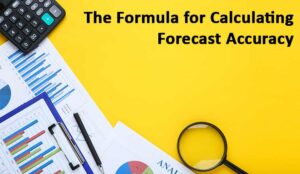Brent Haferkamp at NICE looks at forecast intervals and re-forecast frequency.
Executives and workforce managers alike consider some kind of forecast in virtually every decision they make. Numerous forecasting techniques help leaders handle the challenges that crop up in an increasingly complex contact centre.
Among them are the weighted moving average model, which is usually well suited for stable historical data; the Box-Jenkins AutoRegressive Integrated Moving Average (ARIMA) model, which is often used to handle complex time series forecasting situations in which the basic pattern isn’t clearly apparent; and exponential smoothing, which can be particularly useful when historical data has stationary patterns and when you can assume that the past will continue to influence and represent the future.
Modern forecasting systems can handle incredibly complex demands, weighing and incorporating any range of source, input and historical and real-time data.
Some of the most common applications of forecasting involve long-term needs: staff planning, real estate planning and budgeting, for example. Others, however, take place over a shorter time frame: in the contact centre, short-term forecasts largely centre on scheduling. Here’s what you need to know:
- Long-term Forecasts are typically weekly or monthly projections made out over the next year to 18 months or between three and five years. They’re maintained and updated as new data arrives, usually weekly or monthly; when conditions are highly variable or unknown, updates occur more often – weekly, rather than monthly.
- Short-Term Forecasts, as mentioned earlier, are often used for scheduling; schedules are built based on forecasted volume. Short-term forecasts typically cover one to 12 weeks and are reforecast weekly as new data comes in – even if you have to lock in a forecast four, eight or even 12 weeks out, you should be updating them as you go to be better prepared for what is likely to happen.
If you find that your forecasting isn’t accurate – or if you receive news that will alter your operation, such as a change to your business – be prepared to make daily adjustments to the forecast for the remainder of the week and the following one.
During periods in which you have a lot of unknowns, you can increase the accuracy of your forecasting by producing shorter forecasts (e.g., 12 one-week forecasts instead of one 12-week forecast) or potentially generating single-day forecasts for remainder of the week.
You can also make manual adjustments to remaining forecasts when conditions change. One technique is to let the trend stabilize (if it happens once, it’s an anomaly; two times, an interesting occurrence; and three times, a trend for which the forecast needs to be adjusted). You then split the difference: If the trend over three periods is over by 5%, adjust the forecast by 2.5% and watch for another period or two. This helps you avoid making “whiplash” adjustments back and forth.
As you can see, forecasting isn’t an activity that is done once and then set aside. It’s a dynamic process with frequent updates – and one that’s critically important to the customer experience and your organization’s bottom line.
This blog post has been re-published by kind permission of NiCE-ltd – View the Original Article
For more information about NiCE-ltd - visit the NiCE-ltd Website
Call Centre Helper is not responsible for the content of these guest blog posts. The opinions expressed in this article are those of the author, and do not necessarily reflect those of Call Centre Helper.
Author: NiCE-ltd
Published On: 20th Sep 2021
Read more about - Guest Blogs, NiCE






 NiCE (NASDAQ: NICE) is transforming the world with AI that puts people first. Our purpose-built AI-powered platforms automate engagements into proactive, safe, intelligent actions, empowering individuals and organizations to innovate and act, from interaction to resolution. Trusted by organizations throughout 150+ countries worldwide, NiCE’s platforms are widely adopted across industries connecting people, systems, and workflows to work smarter at scale, elevating performance across the organization, delivering proven measurable outcomes.
NiCE (NASDAQ: NICE) is transforming the world with AI that puts people first. Our purpose-built AI-powered platforms automate engagements into proactive, safe, intelligent actions, empowering individuals and organizations to innovate and act, from interaction to resolution. Trusted by organizations throughout 150+ countries worldwide, NiCE’s platforms are widely adopted across industries connecting people, systems, and workflows to work smarter at scale, elevating performance across the organization, delivering proven measurable outcomes. 









